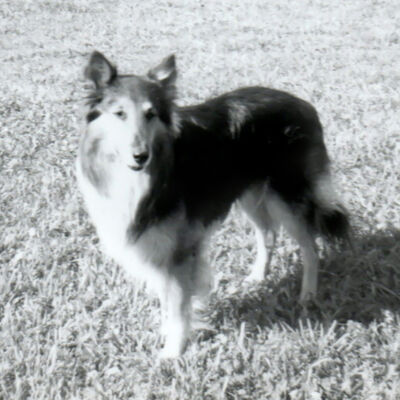Check out Close Up Photography section of our forum.
Shooting Raw
Jan 14, 2014 14:47:41 #
amehta
Loc: Boston
mdorn wrote:
Really? What is the "business polititcs standpoint" between these two formats? Just curious what your take is.
One would be Nikon's sales of Capture NX2. Another would be their unwillingness to give up control over their format. Part of what it includes is all the settings which the camera used to produce the JPEG, so Capture NX2 can reproduce that. All companies play the balancing game between conforming to standards and maintaining their autonomy (even Adobe). The brand-specific raw formats fall on the autonomy side for most of manufacturers.
Jan 14, 2014 16:49:12 #
FredB
Loc: A little below the Mason-Dixon line.
Wellhiem wrote:
Not to get off track, but neither DOS commands nor file names were case sensitive. Unix and its variants is/was, but DOS was not. Only on an NTFS volume (Windows NT, etc) were case-sensitive file names finally instituted, primarily for POSIX compliance. Earlier version of DOS were case sensitive which is why they had a protocol to use upper case.
A quick Google search will bear this out.
Jan 14, 2014 17:24:37 #
FredB wrote:
Not to get off track, but neither DOS commands nor file names were case sensitive. Unix and its variants is/was, but DOS was not. Only on an NTFS volume (Windows NT, etc) were case-sensitive file names finally instituted, primarily for POSIX compliance.
A quick Google search will bear this out.
A quick Google search will bear this out.
No need for a Google search... this is absolutely true. :thumbup:
Check out Film Photography section of our forum.
Jan 14, 2014 18:03:13 #
amehta wrote:
One would be Nikon's sales of Capture NX2. Another would be their unwillingness to give up control over their format. Part of what it includes is all the settings which the camera used to produce the JPEG, so Capture NX2 can reproduce that. All companies play the balancing game between conforming to standards and maintaining their autonomy (even Adobe). The brand-specific raw formats fall on the autonomy side for most of manufacturers.
Thanks... but what I don't understand is why? Conforming to the DNG standard does not force camera MFGs to give up any autonomy. The real autonomy is in the sensor/processor and glass in front of the sensor. In my mind (and this is just my opinion), it boils down to ignorant selfish pride. I'd love for someone to challenge my opinion. Balancing between standards and autonomy sounds very PC, but I don't buy it.
Just to be clear... I'm not attacking you amehta. I realize in the end, it's all about the fear of money. But like the music industry and MP3s, the actual sales data before and after Napster was sued does not suggest that Napster ever brought RIAA to its knees financially.
Jan 14, 2014 18:08:31 #
FredB
Loc: A little below the Mason-Dixon line.
I think the main reason mfg's don't all get together and agree on a raw standard is that it doesn't really cost them any money NOT to. I don't think having proprietary formats is all that "expensive", per se. So unless they can either make money from a standard (prob. not) or not having one COSTS money (prob. not), there's no overriding reason to change.
Sensor design may be the only barrier. Like Intel vs Motorola vs AMD.
Sensor design may be the only barrier. Like Intel vs Motorola vs AMD.
Jan 14, 2014 18:25:04 #
Raw files by default are specific to the camera manufacturer. They all do it different so they all have different formats. JPeg is a compression standard and it's purpose, besides file compression is to be portable rather than proprietary. To have raw files all the same, manufacturers would have to use the same methods to code the picture. They don't, they use jpeg for that.
Jan 14, 2014 18:30:17 #
FredB wrote:
I think the main reason mfg's don't all get together and agree on a raw standard is that it doesn't really cost them any money NOT to. I don't think having proprietary formats is all that "expensive", per se. So unless they can either make money from a standard (prob. not) or not having one COSTS money (prob. not), there's no overriding reason to change.
Sensor design may be the only barrier. Like Intel vs Motorola vs AMD.
Sensor design may be the only barrier. Like Intel vs Motorola vs AMD.
Hmmm... interesting take. Thanks. Fred, do you know if DNG has been accepted by the ISO yet?
Check out Bridge Camera Show Case section of our forum.
Jan 14, 2014 18:49:20 #
washy
Loc: Dorset UK
The main difference between Raw and other is the amount of information a Pic taken in Raw has over the others, therefore the file is larger and the amount of post processing that pic may have done to it
Jan 14, 2014 19:01:22 #
amehta wrote:
A lot of processing needs to happen to go from the... (show quote)
I don't think much processing is done in the camera when it converts the raw data into a jpeg. The only thing it should be doing is looking for colors that are extremely similar, so similar, human eyes cannot distinguish between them. It calls them the same color and then encodes the file. Normally, at low compression levels, this has no significant effect on the picture.
When a jpg is viewed it is decompressed, and you are seeing the raw file anyway, minus what the compression routine figured you can't see anyway, and it figured it because you can't unless you tell it to use lots of compression. When you tell it to use lots of compression, it is expanding the range of similar colors you want it to combine into the same color, and the picture will degrade. (This also happens if you keep re-compressing the same file over and over because each time it will look for close colors and try to combine them.)
You can edit the heck out of it, just like a raw file, just keep the original original. That's what raw editors do, they don't change the original, they save your changes to a separate file.
This is the reason so many people have had huge success editing jpg files with little need for all the work and space involved with raw files. There are times raw files is a better way to go, but, chest beating aside, I haven't discovered them myself. About all they really do is take up space.
This is also the reason people have trouble with jpg files, they apply too much compression, re-compress the same file over and over, and so on.
Jan 14, 2014 20:04:39 #
amehta
Loc: Boston
BigDaddy wrote:
I don't think much processing is done in the camer... (show quote)
The jpeg image the camera produces has had all the basic post processing steps applied: white balance, color adjustments (saturation, hue, ...), noise reduction, and sharpening. Then the data is compressed, in both space and color. When you view the jpeg, you are not viewing the raw file. If they look identical, it's probably because, when you are viewing the raw file, you are actually viewing the embedded jpeg, which is the same as the separate jpeg file, though it may be a different resolution and compression level.
Jan 14, 2014 20:49:16 #
amehta
Loc: Boston
mdorn wrote:
Thanks... but what I don't understand is why? Con... (show quote)
Conforming to any standard means you (the camera manufacturer) cannot do whatever you want, you have to "fit". If Sony says, "Ok, we'll use DNG", and in two years the develop an 18-bit sensor, they can't use it because DNG only supports 16 bit. It seems like the answer should be, "don't worry, it will just work," but that's not the way things work in the software world, and that's the world we're talking about here.
Jan 14, 2014 20:52:30 #
amehta
Loc: Boston
mdorn wrote:
Hmmm... interesting take. Thanks. Fred, do you know if DNG has been accepted by the ISO yet?
This wikipedia article indicates that it has not yet been incorporated as ISO works on the TIFF format, but it may be out of date: http://en.wikipedia.org/wiki/Digital_Negative
Jan 14, 2014 20:52:55 #
amehta wrote:
I agree it would be nice if the all used DNG, but to equate DNG with JPG is not quite accurate, from a business/corporate politics standpoint.
I think I remember hearing that DNG is a proprietary format by Adobe. Is this correct?
If so, is it better to let Adobe own everything or keep some form of independence while we await the eventual arrival of competitive high level photo processing software?
Jan 14, 2014 20:54:38 #
BobHartung wrote:
I think I remember hearing that DNG is a proprietary format by Adobe. Is this correct?
If so, is it better to let Adobe own everything or keep some form of independence while we await the eventual arrival of competitive high level photo processing software?
If so, is it better to let Adobe own everything or keep some form of independence while we await the eventual arrival of competitive high level photo processing software?
Answered my own question:
http://en.wikipedia.org/wiki/Digital_Negative
Jan 14, 2014 21:00:31 #
amehta
Loc: Boston
BobHartung wrote:
Adobe has developed DNG as an "open" format.
Adobe is one of the more interesting companies in terms of intellectual property, especially with some of the changes they've made over time.
If you want to reply, then register here. Registration is free and your account is created instantly, so you can post right away.
Check out Bridge Camera Show Case section of our forum.


